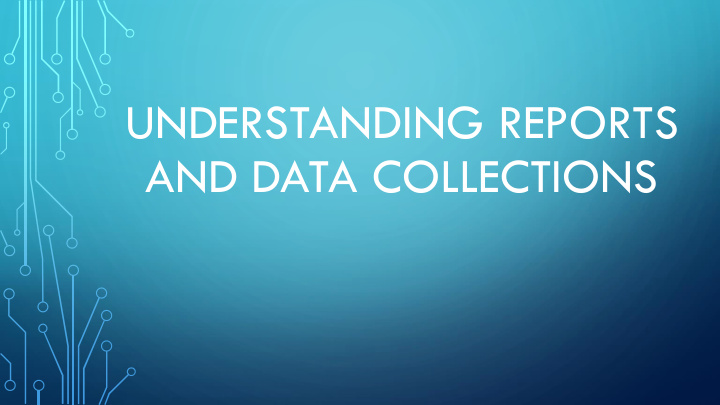



UNDERSTANDING REPORTS AND DATA COLLECTIONS
REPORTING SYSTEM • Feedback from parents at the Michaelmas Parent Forum More information from the school More parents’ evenings More regular updates on pupil progress Some year groups had no information published until after Christmas Forecast data would be more useful than current working grades, especially for exam year groups Full reports too late in the year , parents have no time for queries and it is too late for pupils to act upon targets
CHANGES THAT WE MADE • Introduced data collections five times a year KS3 have full data collections three times a year, and just Maths, English and Science twice a year KS4 and KS5 have full data collections five times a year Data collections include effort grades and forecast grades for every subject Collections October, December, February, March for all pupils May collection for Years 11, 12 and 13 containing final predicted grades June collection for Years 7, 8, 9 and 10 containing end of year attainment All data collections available on the parent portal
OTHER DATA AVAILABLE ON PARENT PORTAL • Year 11 Mock Results • Year 12 and 13 Mock Results • Year 7, 8, 9 and 10 internal exam results
INTERIM REPORTS, FULL REPORTS AND PARENTS’ EVENINGS • Extra parents’ evening in Year 7 (settling in), Year 9 (options), Year 11 (mock results) and Year 13. • Interim report for Years 8, 10 and 12 now includes short written target as well as data. • Full report format changed to A5 and includes SEN and Music reports. • Full reports now spread out through the year at key points
WHAT THE DATA MEANS • Key Stage 3 New system introduced following government removal of KS3 Levels. Feedback from pupils, parents, staff and other schools System had nine grade to link directly with new GCSE grades Years 8 and 9 had data transferred directly from the old system Year 7 scale is different in many subjects as the new levels have been linked directly to the schemes of work without having to link to the old levels Year 9 targets generated from the Entrance exam scores Year 7 and 8 targets then “tracked back” from Year 9 target Teachers can adjust targets up if they are not challenging enough
WHAT THE DATA MEANS • Key Stage 4 GCSE targets generated from Yellis tests done in Year 10 Departments then adjust these targets to make them challenging for pupils The department target then becomes the Year 11 target The Year 10 target is a grade below the Year 11 target All data collected is forecast towards the end of year targets – what a pupil is on course to achieve if they keep working as they are at the moment
WHAT THE DATA MEANS • Key Stage 5 A level targets generated from ALIS tests done in Year 12 Departments then adjust these targets to make them challenging for pupils The department target then becomes the Year 13 target The Year 12 target is the same as the Year 13 target except for History All data collected is forecast towards the end of year targets – what a pupil is on course to achieve if they keep working as they are at the moment
THANK YOU FOR LISTENING – ANY QUESTIONS?
Recommend
More recommend